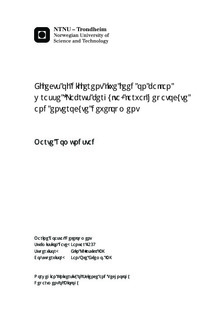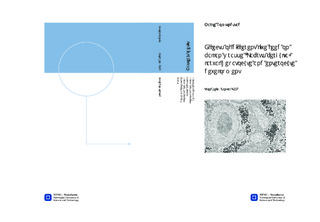| dc.description.abstract | Abstract
Salmon lice infestations are one of the biggest challenges for Norwegian salmon farming today. Delousing agents have been the solution to these infestations in the past, but overuse and wrong dosages have caused the lice to become resistant to the chemicals and thus rendering them ineffective. As a result cleaner fish have been proposed as an all-natural delousing agent. The ballan wrasse has been proposed as the ideal cleaner fish for Norwegian waters and is being caught in the wild and put in the fish pens with the salmon. To be able to use ballan wrasse on a larger scale and in a sustainable way, it has been proposed to begin farming of the ballan wrasse. This will secure a stable supply of this fish to the salmon farms. One of the keys to successfully rearing ballan wrasse is to figure out the ideal feeding regime in the larval stage of development when the larvae are dependent on live feed. The traditional live feed of rotifers and artemia do not meet the nutritional requirements of marine fish larvae and has to be enriched to meet these requirements. Copepods has been suggested as a more suitable live feed as it is the natural prey of most wild marine fish and meets their nutritional requirements thus not needing to be enriched.
In this study the traditional live feed of rotifers and artemia was compared with using intensively reared copepods (Acartia tonsa) exclusively through the whole live feed period of ballan wrasse larvae. The Rotifer-group was fed enriched rotifers from 4 dph until 30 dph, and was co-fed enriched rotifers and enriched artemia between 30 dph and 40 dph. From 40 dph until the end of the experiment (45 dph) the Rotifer-group was fed enriched artemia exclusively. The Copepod-group was fed intensively reared copepods exclusively throughout the experiment (4-45 dph). The ballan wrasse larvae were fed Acartia tonsa nauplii until 15 dph, then as the larvae grew they were fed copepodits from 15 dph until 30 dph. From 30 dph to 45 dph the larvae were fed a combination of copepodits and adult Acartia tonsa in a 2:1 ratio. The two groups were compared to see if the nutritional differences of the live prey had an effect on different growth parameters and how it affected the gut and liver development in the ballan wrasse larvae.
The results from this study indicates that intensively reared Acartia tonsa was a better live feed for ballan wrasse larvae compared to enriched rotifers and enriched artemia. The larvae that were fed copepods showed better growth and had better liver and gut development than the larvae fed enriched rotifers and artemia | |

